Themed collection Most popular 2018-2019 main group, inorganic and organometallic chemistry articles

En route to metal-mediated and metal-catalysed reactions in water
This perspective report presents the key approaches for the development of various organometallic reactions in aqueous media.
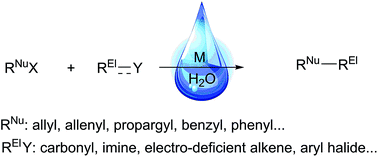
Chem. Sci., 2019,10, 34-46
https://doi.org/10.1039/C8SC04271C
Adaptive responses of sterically confined intramolecular chalcogen bonds
The existence of intramolecular chalcogen bonds (IChBs) in 2,6-disubstituted arylchalcogen derivatives is determined by the substituents and the sigma hole donor behavior of the chalcogen atom in the molecule.
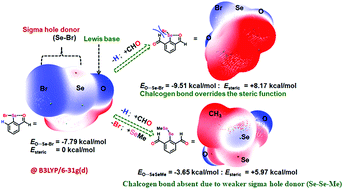
Chem. Sci., 2018,9, 7027-7042
https://doi.org/10.1039/C8SC01943F
Spin states, vibrations and spin relaxation in molecular nanomagnets and spin qubits: a critical perspective
Spin–vibration coupling has been proven to be crucial for spin dynamics; theoretical studies are now addressing this experimental challenge.
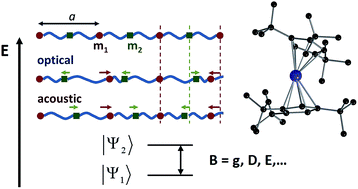
Chem. Sci., 2018,9, 3265-3275
https://doi.org/10.1039/C7SC05464E
The aromatic dianion metalloles
This perspective includes the synthesis and future challenges of aromatic dianion metalloles and their analogues.
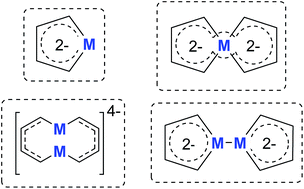
Chem. Sci., 2018,9, 560-568
https://doi.org/10.1039/C7SC04454B
Photoactivity and optical applications of organic materials containing selenium and tellurium
Incorporating selenium or tellurium into photoactive species imparts new photophysical properties that may be exploited in materials applications.
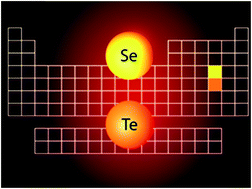
Chem. Sci., 2019,10, 9182-9188
https://doi.org/10.1039/C9SC04279B
Stable cyclic (alkyl)(amino)carbene (cAAC) radicals with main group substituents
Recent attempts to isolate cyclic (alkyl)(amino)carbene stabilized radicals of p-block elements have been described here.
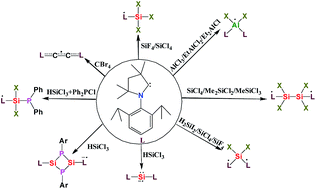
Chem. Sci., 2019,10, 4727-4741
https://doi.org/10.1039/C9SC01351B
A lesson for site-selective C–H functionalization on 2-pyridones: radical, organometallic, directing group and steric controls
This minireview focuses on recent advances in site-selective C–H functionalization on 2-pyridone which is an important heterocyclic motif in medicinal and pharmaceutical chemistry.

Chem. Sci., 2018,9, 22-32
https://doi.org/10.1039/C7SC04509C
Hydration of nitriles using a metal–ligand cooperative ruthenium pincer catalyst
The hydration of a broad range of aliphatic and (hetero)aromatic nitriles is reported via catalysis by metal–ligand cooperative Ru pincer complexes under very mild conditions.

Chem. Sci., 2019,10, 10647-10652
https://doi.org/10.1039/C9SC04624K
Mechanochemistry allows carrying out sensitive organometallic reactions in air: glove-box-and-Schlenk-line-free synthesis of oxidative addition complexes from aryl halides and palladium(0)
We have demonstrated that mechanochemistry allows synthesizing a wide range of palladium oxidative addition complexes in air.

Chem. Sci., 2019,10, 5837-5842
https://doi.org/10.1039/C9SC01711A
Tuning the π-bridge of quadrupolar triarylborane chromophores for one- and two-photon excited fluorescence imaging of lysosomes in live cells
The tetracationic diketopyrrolopyrrole compound 5M exhibits a σ2 value of 4560 GM at 740 nm.
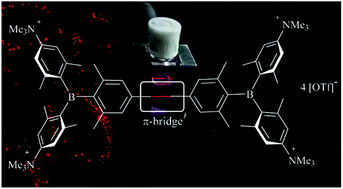
Chem. Sci., 2019,10, 5405-5422
https://doi.org/10.1039/C9SC00793H
Alkali metal complexes of an enantiopure iminophosphonamide ligand with bright delayed fluorescence
Alkali metal complexes of an enantiopure iminophosphonamide bearing chiral centers at both nitrogen atoms are described. They show bright phosphorescence and thermally activated delayed fluorescence (TADF).
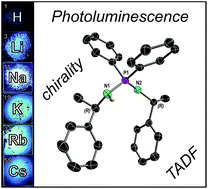
Chem. Sci., 2019,10, 4742-4749
https://doi.org/10.1039/C9SC00629J
Reversible alkene binding and allylic C–H activation with an aluminium(I) complex
The monomeric molecular aluminium(I) complex 1 [{(ArNCMe)2CH}Al] (Ar = 2,6-di-iso-propylphenyl) reacts with a series of terminal and strained alkenes including ethylene, propylene, allylbenzene and norbornene to form alkene bound products.

Chem. Sci., 2019,10, 2452-2458
https://doi.org/10.1039/C8SC04865G
A double helix of opposite charges to form channels with unique CO2 selectivity and dynamics
Electrostatic charges patterning along crystalline channels recognize CO2 with high selectivity and promote its fast screwing dynamics through the crystal at one million steps per second, strongly reminiscent of trans-membrane transport in biological channels.
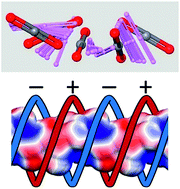
Chem. Sci., 2019,10, 730-736
https://doi.org/10.1039/C8SC04376K
Hetero-metallic active sites coupled with strongly reductive polyoxometalate for selective photocatalytic CO2-to-CH4 conversion in water
Two reductive polyoxometalate (POM)-based heterogeneous photo-catalysts display highly selective CO2-to-CH4 conversion in water.
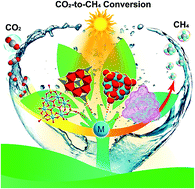
Chem. Sci., 2019,10, 185-190
https://doi.org/10.1039/C8SC03471K
High-temperature magnetic blocking and magneto-structural correlations in a series of dysprosium(III) metallocenium single-molecule magnets
Subtle changes in ligand substitution result in substantial changes in molecular structure and magnetic properties in a series of dysprosium(III) metallocenium salts.
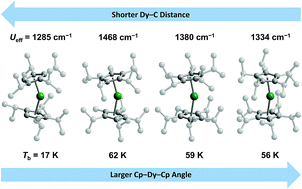
Chem. Sci., 2018,9, 8492-8503
https://doi.org/10.1039/C8SC03907K
Al(OCArF3)3 – a thermally stable Lewis superacid
Al(OCArF3)3 (ArF = C6F5) – a readily accessible, adduct free and highly stable Lewis superacid with an extreme fluoride ion affinity to store in your glove box!
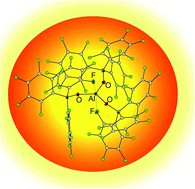
Chem. Sci., 2018,9, 8178-8183
https://doi.org/10.1039/C8SC02981D
Four-coordinate triarylborane synthesis via cascade B–Cl/C–B cross-metathesis and C–H bond borylation
We herein describe a tandem highly selective B–Cl/C–B cross-metathesis of two same or different arylboranes and C–H bond borylation to synthesize four-coordinate triarylboranes with broad substrate scope.

Chem. Sci., 2018,9, 7666-7672
https://doi.org/10.1039/C8SC02281J
Kekulé diradicaloids derived from a classical N-heterocyclic carbene
Two-electron reduction of bis(1,3-imidazolinium) salts 2 and 3 with KC8 gives rise to stable diradicaloids 4 and 5, respectively. Calculations reveal a very low singlet–triplet energy gap ΔES–T for 5 (10.7 kcal mol−1), while ΔES–T for 4 (29.1 kcal mol−1) is rather large.
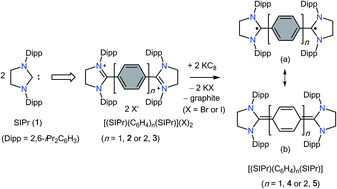
Chem. Sci., 2018,9, 4970-4976
https://doi.org/10.1039/C8SC01209A
Copper-catalyzed asymmetric hydrogenation of 2-substituted ketones via dynamic kinetic resolution
A new class of tunable heterophosphole dimeric ligands have been designed and synthesized.

Chem. Sci., 2018,9, 4505-4510
https://doi.org/10.1039/C8SC00434J
Pd(II)-catalyzed synthesis of bifunctionalized carboranes via cage B–H activation of 1-CH2NH2-o-carboranes
Pd-catalyzed, transient group-directed diarylation of cage B(4,5)–H bonds in 1-CH2NH2-o-carboranes was reported, including the isolation and structural characterization of key intermediates.

Chem. Sci., 2018,9, 3964-3969
https://doi.org/10.1039/C8SC01154K
A redox-active diborane platform performs C(sp3)–H activation and nucleophilic substitution reactions
Targeted C(sp3)–H activation or nucleophilic substitution reactions have been achieved through the interaction of a diborane dianion with haloalkanes.
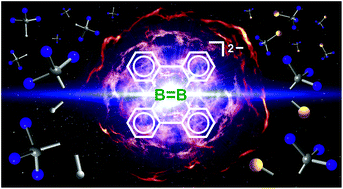
Chem. Sci., 2018,9, 3881-3891
https://doi.org/10.1039/C8SC00743H
A combined experimental and computational study on the reaction of fluoroarenes with Mg–Mg, Mg–Zn, Mg–Al and Al–Zn bonds
Through a combined experimental and computational (DFT) approach, the reaction mechanism of the addition of fluoroarenes to Mg–Mg bonds has been determined as a concerted SNAr-like pathway in which one Mg centre acts as a nucleophile and the other an electrophile.
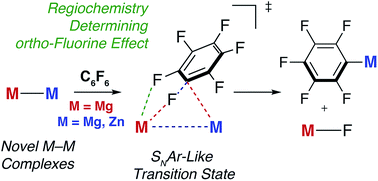
Chem. Sci., 2018,9, 2348-2356
https://doi.org/10.1039/C7SC05059C
Nickel-catalyzed coupling reaction of alkyl halides with aryl Grignard reagents in the presence of 1,3-butadiene: mechanistic studies of four-component coupling and competing cross-coupling reactions
The detailed reaction mechanism of anionic Ni complex-promoted C–C bond forming reactions was clarified by experimental and theoretical methods.

Chem. Sci., 2018,9, 2195-2211
https://doi.org/10.1039/C7SC04675H
Closely related yet different: a borylene and its dimer are non-interconvertible but connected through reactivity
This side-by-side reactivity study of a borylene and a diborene with the same empirical formula demonstrates their non-interconvertibility.
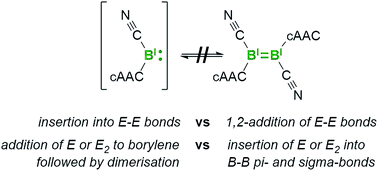
Chem. Sci., 2018,9, 2252-2260
https://doi.org/10.1039/C7SC04789D
Metal alkyls programmed to generate metal alkylidenes by α-H abstraction: prognosis from NMR chemical shift
Chemical shift analysis predicts the ease of alkylidene formation from bis-alkyl d0 complexes via α-H abstraction.
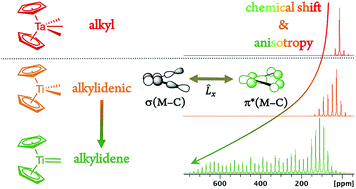
Chem. Sci., 2018,9, 1912-1918
https://doi.org/10.1039/C7SC05039A
A simple multi-responsive system based on aldehyde functionalized amino-boranes
An aldehyde functionalized amino-borane has been found to respond to multiple external stimuli such as temperature, pressure and solvents, producing distinct patterns and colours.
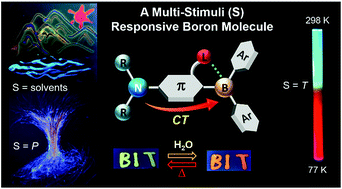
Chem. Sci., 2018,9, 1902-1911
https://doi.org/10.1039/C7SC03617E
Polyoxovanadate-alkoxide clusters as multi-electron charge carriers for symmetric non-aqueous redox flow batteries
Installation of bridging alkoxide ligands leads to improvements to solubility, stability and redox profile of POM clusters!

Chem. Sci., 2018,9, 1692-1699
https://doi.org/10.1039/C7SC05295B
Reactivity of highly Lewis acidic diborane(4) towards pyridine and isocyanide: formation of boraalkene–pyridine complex and ortho-functionalized pyridine derivatives
The reaction of pinB-BMes2 with Xyl-NC and pyridine results in the formation of a pyridine-coordinated boraalkene that exhibits an intense color. In the presence of an excess of pyridine, the ortho C–H bond of pyridine was selectively functionalized.
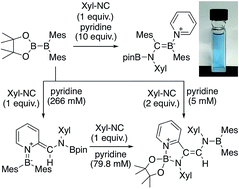
Chem. Sci., 2018,9, 1301-1310
https://doi.org/10.1039/C7SC04759B
Diphosphine-protected ultrasmall gold nanoclusters: opened icosahedral Au13 and heart-shaped Au8 clusters
Two ultrasmall gold clusters, Au13 and Au8, were identified as a distorted Ih icosahedral Au13 and edge-shared “core + 4exo” structure Au8S2 cores, respectively. They showed interesting luminescence and electrochemical properties.
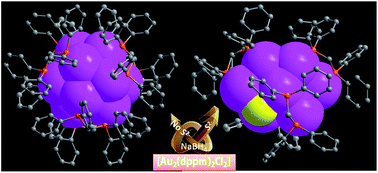
Chem. Sci., 2018,9, 1251-1258
https://doi.org/10.1039/C7SC03566G
The Lewis superacid Al[N(C6F5)2]3 and its higher homolog Ga[N(C6F5)2]3 – structural features, theoretical investigation and reactions of a metal amide with higher fluoride ion affinity than SbF5
Lewis superacid with higher fluoride ion affinity than SbF5.
![Graphical abstract: The Lewis superacid Al[N(C6F5)2]3 and its higher homolog Ga[N(C6F5)2]3 – structural features, theoretical investigation and reactions of a metal amide with higher fluoride ion affinity than SbF5](/en/Image/Get?imageInfo.ImageType=GA&imageInfo.ImageIdentifier.ManuscriptID=C7SC03988C&imageInfo.ImageIdentifier.Year=2018)
Chem. Sci., 2018,9, 245-253
https://doi.org/10.1039/C7SC03988C
About this collection
This specially curated collection pulls together some of the most popular articles from 2018 and 2019 in the field of main group, inorganic and organometallic chemistry. The collection presents some outstanding contributions to the field, ranging from the reactivity of diborane(4) towards pyridine and isocyanide to a review of spin states, vibrations and spin relaxation in molecular nanomagnets and spin qubits, and as with all Chemical Science articles – they are all completely free to access and read. We hope you enjoy browsing through this collection.
See also: